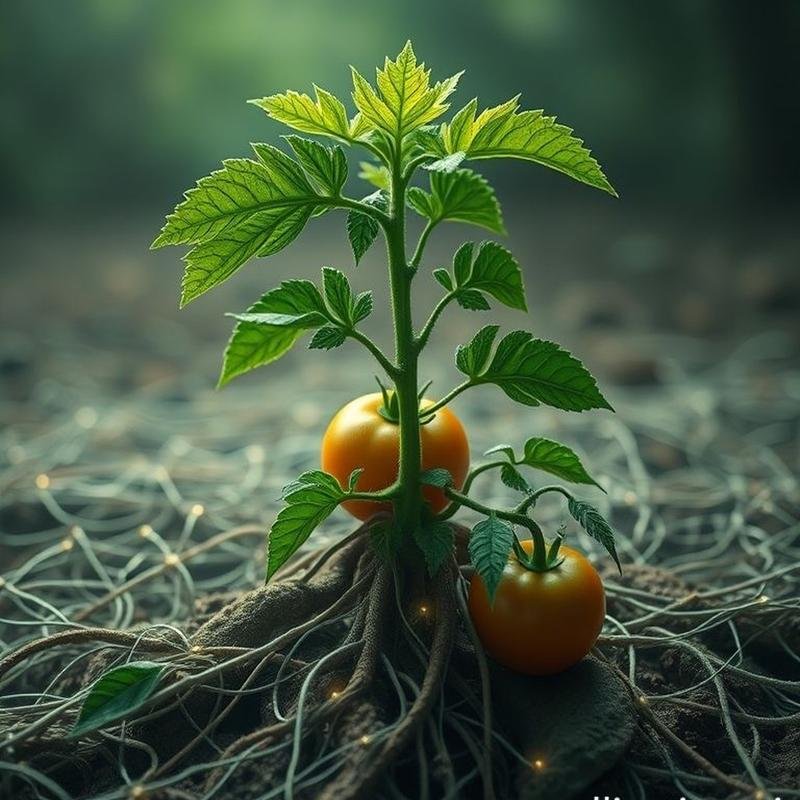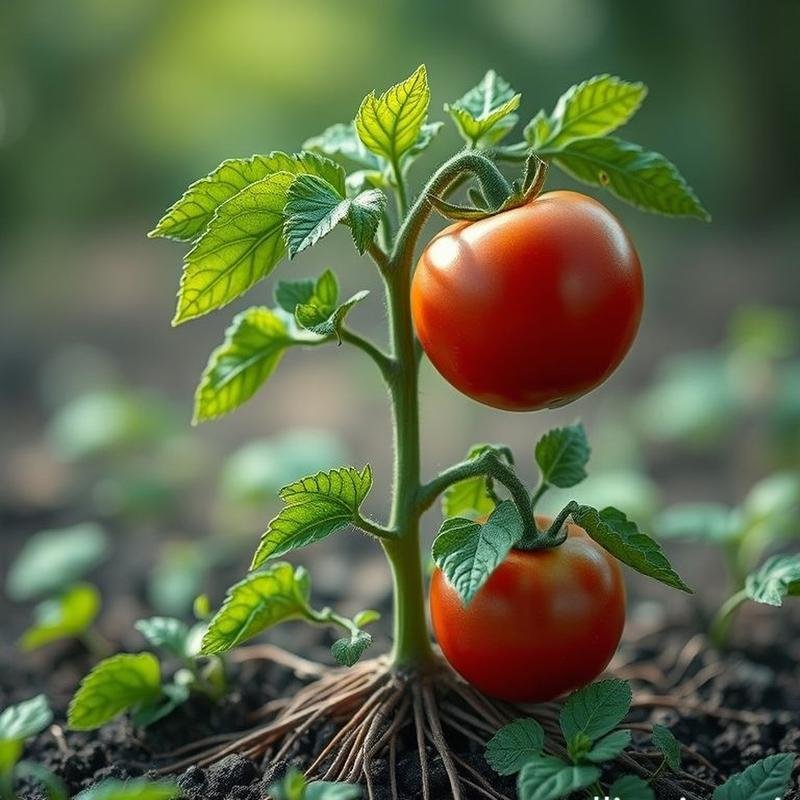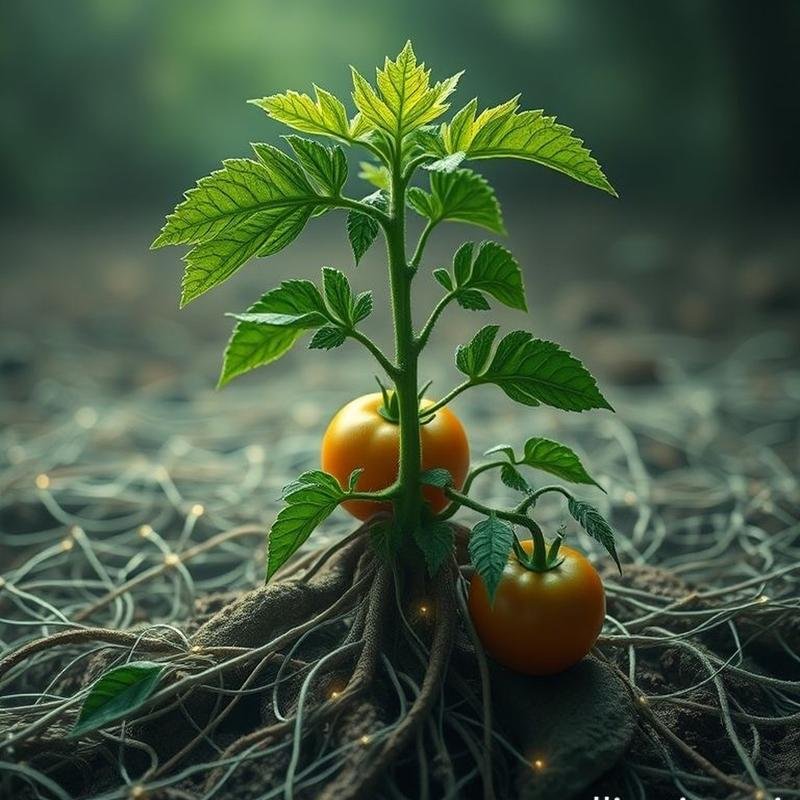🤯 Do Plants Think? Unveiling the Surprising Intelligence of Plants! 🌿

Plant Cognition: Do Plants Think? Exploring Plant Intelligence
Could an ancient, seemingly silent tree possess cognitive abilities, solve problems, and communicate with its neighbors in ways that surpass our current comprehension? This documentary embarks on an extraordinary exploration into the hidden world of plants, revealing how the emerging field of plant intelligence is challenging traditional definitions of life and prompting a fundamental re-evaluation of what it means to be a living being.
Before we delve into the compelling evidence, we invite you to share your initial perspectives in the comments section. To join us on this fascinating journey to uncover the secrets of this botanical enigma, please subscribe to our channel.
The Dawn of Plant Neurobiology
Having posed the question of whether plants are capable of problem-solving and intercommunication beyond our understanding, we now turn to plant neurobiology, a burgeoning field poised to revolutionize our perception of these organisms. At the dawn of the 20th century, Jagadish Chandra Bose pioneered research demonstrating that plants exhibit electrical responses to various stimuli, mirroring animal behavior. These were not merely transient occurrences, but rather robust signals indicative of a sophisticated internal communication system, raising the crucial question: could plants possess a form of nervous system?
Remarkable Sensory Capabilities
Subsequently, Stefano Mancuso illuminated the remarkable sensory capabilities of roots, which detect gravity, moisture, and chemicals in the soil, enabling them to locate water and nutrients with exceptional precision. Envision a complex network of microscopic sensors beneath the earth’s surface, operating in exquisite harmony to guide plant growth. David Chamovitz discovered that plants utilize photoreceptors analogous to those in animal eyes, granting them the ability to perceive light in nuanced ways that extend beyond simple directional orientation. Most remarkably, plants communicate with each other through volatile organic compounds, akin to our use of language. For instance, a tree under insect attack may release chemical signals that alert neighboring trees, prompting them to synthesize defensive compounds for self-protection. This constitutes a silent, yet highly effective, form of communication.
Silent Signals: Plant Communication
These subtle signals, long overlooked, are now resonating with remarkable clarity. Research has demonstrated that tomato plants transmit electrical signals through intricate underground fungal networks, warning neighboring plants of impending threats, such as caterpillar infestations. Imagine an early warning system, independent of wires or satellites, relying instead on a chemical and electrical language that transcends the boundaries of the plant kingdom.
Chrysanthemums, for example, employ volatile organic compounds as a fragrant distress signal, attracting predatory insects that prey on the pests attacking them. This represents a clever enticement, where the predator becomes an unexpected ally in the ongoing struggle for survival. In a groundbreaking experiment conducted in 1983, scientists discovered that willow trees release airborne chemicals to warn neighboring trees of insect attacks, prompting them to increase the production of tannins, a bitter-tasting defensive compound.
However, plant communication extends beyond chemical signaling. Corn roots emit low-frequency clicking sounds, subtle aquatic whispers, that precisely guide their growth towards vital water sources. Wild tobacco plants utilize complex chemical signals to attract caterpillars that feed on other plants, a strategic maneuver to reduce intense competition. Even bean plants, as a recent study has revealed, recognize and cooperate harmoniously with neighboring plants of the same species by exchanging nutrients through fungal networks.
Problem-Solving in the Plant Kingdom
The true challenge lies in understanding the capacity of plants to solve complex problems. Can a seemingly primitive organism, lacking a brain, truly possess such abilities? The answer, it appears, is surprisingly affirmative.
Consider the Boquila trifoliolata vine, which climbs through the rainforest. It is not merely growing; it is a master of camouflage, capable of mimicking the leaves of surrounding plants, even those belonging to different species. The mechanism by which it achieves this feat remains enigmatic, but the result is remarkable protection from herbivores through skillful mimicry.
Consider also the Mimosa pudica, or sensitive plant. A mere touch is sufficient to induce a rapid defensive folding of its leaves. However, the true revelation lies in its capacity for learning. With repeated, harmless stimuli, the plant begins to disregard the touch, as if signaling, “This is not a significant threat.” Is this an example of memory in action?
Pea plants exhibit even more sophisticated behavior. In one experiment, they learned to navigate to a support using tactile cues, and even preferred a previously learned, more challenging path over an easier alternative. In 2013, Dr. Monica Gagliano presented groundbreaking evidence that pea plants can detect the sound of running water and direct their roots towards it. Are we witnessing a rudimentary form of auditory perception?
Challenging Our Understanding
Does this evidence suggest that our understanding is fundamentally flawed? Was our perception of ourselves as the pinnacle of evolution merely an illusion? We have long considered ourselves the most intelligent and capable species, but what if this is simply a manifestation of human hubris?
Recall the pea plant experiments, where the plant persistently chose the more difficult path to reach its support. In the early 20th century, Sir Jagadish Chandra Bose demonstrated that plants exhibit electrical responses to stimuli, suggesting a form of consciousness. Today, scientists employ the term plant neurobiology to describe the complex signaling systems that operate within plants.
In his book *The Botany of Desire*, philosopher Michael Pollan challenged the prevailing negative perception of plants, advocating for the recognition of their moral rights. Stefano Mancuso’s research revealed that plants communicate through a complex network of fungi in the soil – the Wood Wide Web, as described by Suzanne Simard – a network for the exchange of information and vital resources. In 2014, the journal *Trends in Plant Science* initiated a widespread debate regarding the very definition of plant intelligence.
Redefining Intelligence and Ethics
Redefining intelligence to encompass plants compels us to re-evaluate our position within the fabric of existence. Are we truly masters of nature, or merely threads in a complex web of life? Are we prepared to acknowledge that intelligence can manifest in unexpected forms, and that plants may possess capabilities that exceed our current understanding?
Through the vast fungal network, our destinies are inextricably linked to the plant kingdom, in a close and interdependent relationship. But what if recognizing plant intelligence fundamentally alters our ethical framework? A pressing question arises: do plants deserve to be afforded rights?
In 1992, Vanessa Furse initiated a significant debate in her book *The Rights of Plants*, questioning whether our moral considerations should extend to include plant life. Ecuador, in 2008, took a bold step by constitutionally recognizing the rights of nature, including plants, as entities worthy of protection.
Is this merely a fleeting expression of romantic sentiment? A 2014 study conducted by the University of Florence revealed that plants can differentiate between sounds and respond to them in distinct ways. In 2019, the Swiss Ethics Committee advocated for treating plants with greater respect, recognizing them as living beings with intrinsic value.
Philosopher Michael Pollan argues that plants deserve moral consideration, not necessarily based on their consciousness, but due to their critical role in the ecosystems upon which we all depend. Given the loss of 75% of the genetic diversity of agricultural crops over the past century, can we afford to disregard our growing responsibility towards this vast plant biodiversity?
The Future of Plant Intelligence
What if these discoveries represent only the beginning? What if we could harness the intelligence of plants to reshape our world? Imagine expansive agricultural fields where plants communicate harmoniously, exchanging nutrients and vital information through hidden underground fungal networks, significantly reducing our reliance on harmful fertilizers and pesticides. Envision plant-based robots, inspired by the agile movement of roots, exploring the depths of the soil in search of water and minerals with unparalleled efficiency.
We are referring to plants transforming into ultra-precise biological sensors, monitoring environmental pollution and alerting us to impending disasters before they occur. To bio-building materials derived from plants, mitigating the effects of devastating climate change and contributing to a greener and more sustainable future. And even to plants integrated with advanced nano-electronic devices, detecting explosives and transmitting information wirelessly, enhancing our security and safety in unprecedented ways. These are not merely far-fetched scientific fantasies, but promising possibilities on the near horizon, driven by our deepening understanding of plant intelligence and its remarkable capacity for adaptation and learning.
This future necessitates a re-evaluation of our relationship with the natural world. Are we truly masters of this planet, or merely threads in a complex web of life, a fabric that transcends our current understanding? Imagine the forest, not as a collection of individual trees, but as a single, breathing entity.
Conclusion: An Interconnected World
Recent studies have revealed a remarkable truth: plants possess the ability to learn and remember, much like animals. Research at the University of Western Australia has demonstrated that plants can distinguish between genuine threats and harmless stimuli, suggesting a form of memory. Furthermore, plant roots, as discovered by Italian botanist Stefano Mancuso, contain a high concentration of neuron-like cells, functioning as an underground brain that manages complex biological processes.
Perhaps the most surprising revelation lies in the discovery of secret communication networks between plants. Through underground fungal networks, trees exchange nutrients and information, resembling a living internet. Suzanne Simard, a leading microbial ecologist, has revealed that mature Douglas fir trees transfer carbon to young seedlings, ensuring the survival of the next generation. These are not isolated incidents, but glimpses into a complex and interconnected world, a world that connects us all. A world whose value we must recognize, and whose protection becomes our shared responsibility.
Deep within the soil, where hidden fungal networks intertwine, trees engage in a vital exchange of nutrients and information, akin to a vibrant natural internet. Suzanne Simard, a leading microbial ecologist, has revealed an astonishing phenomenon: mature Douglas fir trees transmit precious carbon to young seedlings, ensuring the continuation of the next generation.
For those seeking further exploration, it is important to note that our understanding of plant intelligence remains in its nascent stages. A 2014 study conducted at the University of Western Australia revealed the ability of pea plants to learn to associate light with the location of food.







